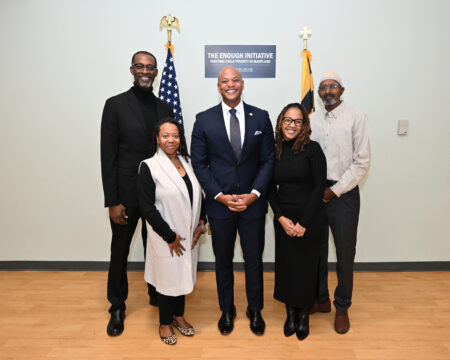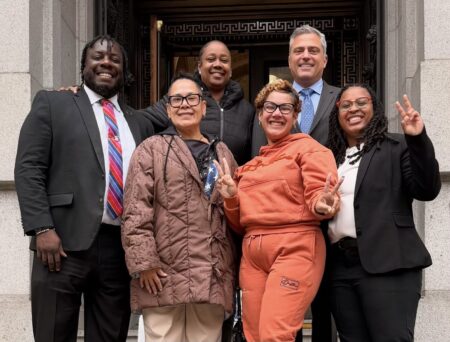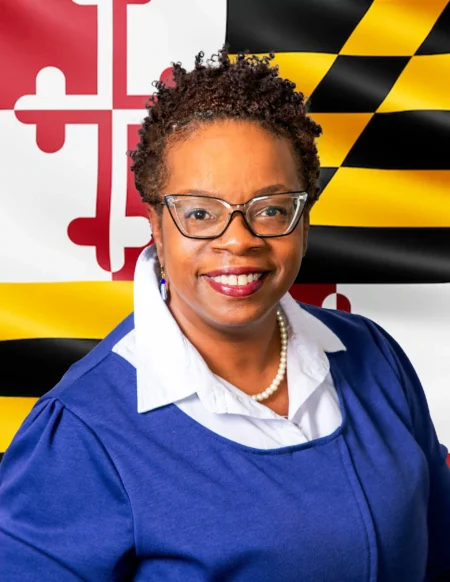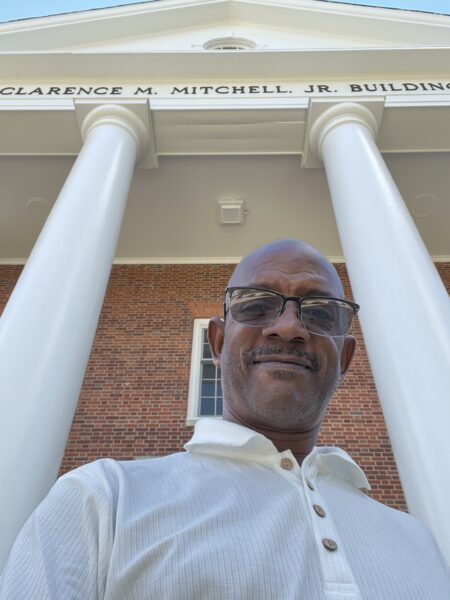Maryland’s only all-boys charter school faces closure vote January 14 as state demands funding transparency from districts
By Doni Glover, BMORENews.com
Baltimore Collegiate School for Boys—Maryland’s only all-boys charter school—faces a closure vote on January 14, 2026, caught in the middle of a statewide funding crisis that has prompted state education leaders to demand answers from school districts.
The school board cites “not effective” ratings in academics and financial management. Yet Edwin Avent’s school graduates more than 90% of its boys—roughly 20 points higher than Baltimore City Public Schools’ approximately 70% graduation rate.
Baltimore Collegiate’s fight for survival comes as charter schools across Maryland warn of possible closures due to what they describe as dramatic funding cuts since the rollout of the Blueprint for Maryland’s Future. Last Thursday, the Maryland State Board of Education voted 13-0 to require all 24 school districts to publicly explain how they calculate charter school funding, submit detailed budget breakdowns, and justify any differences between what charter and traditional schools receive. The deadline: July 31.
The 25% Problem
Baltimore City Public Schools has been withholding around 25% of Baltimore Collegiate’s Blueprint funding, according to charter school leaders across the city who are fighting similar battles.
State guidance says the district should take 2% for administrative fees. Not twenty-five. Two.
Will McKenna, founder and executive director of Afya Baltimore, told The Baltimore Sun he’s representing 14 charter school operators in a dispute with the school system. The numbers he shared reveal a dramatic shift: Baltimore charter schools received between $3,500 and $3,700 more per pupil than traditional schools in fiscal years 2020-2022. After the Blueprint for Maryland’s Future was implemented, that amount plummeted to $694 per student in fiscal year 2024, then $227 in fiscal year 2025, before slightly increasing to $298 in fiscal year 2026.
For one school, this year’s per-pupil funding totals just $251,000.
“There’s no way on God’s green earth that you can tell me that a charter school that operates its own building can take $251,000 and do what it’s supposed to do,” McKenna told The Sun.
When the majority of your students enter reading below grade level—and the district that failed them now takes a quarter of the money intended to help them catch up—what exactly do you expect to happen?
The Two-Year Miracle
Edwin Avent was given two years to turn around boys the traditional system had already abandoned. The expectation was a miracle.
Here’s what actually happened: He took boys reading multiple grade levels behind and got more than 90% of them to graduation—roughly 20 points higher than the district average.
But miracles cost money. Remediation costs money. Behavioral support costs money. Small class sizes cost money. Everything required to serve boys reading behind requires resources—resources the district is withholding.
The Pattern
Three weeks ago, New Song Academy—after 31 years of service in Sandtown-Winchester—closed its doors. Another charter serving a vulnerable community. Another building they could no longer maintain. Another executive director gone because bills weren’t paid for months.
Now Baltimore Collegiate. Now Maryland’s only all-boys charter school, created specifically to interrupt the pipeline swallowing Black boys in Baltimore.
At the same time, the district is also moving to close Dallas F. Nicholas Elementary and Renaissance Academy High. Three schools targeted for closure in one cycle. But only one is the state’s sole institution built explicitly for Black boys.
State Leaders Demand Answers
The state board’s action Thursday came after charter schools across Maryland warned of possible closures. State Board President Joshua Michael acknowledged that funding formulas for charters have lacked clarity for 20 years, leading to costly legal appeals. The lack of clarity “is and has been an institutional failure for the state board, [Maryland State Department of Education] and state policymakers,” he said during the meeting, according to The Sun.
State Superintendent Carey Wright’s memo, adopted by the board, makes clear that charter schools should receive their full allocation of Blueprint per-pupil funding, minus a longstanding 2% administrative fee. Any additional withholding must be negotiated and agreed upon by the charter schools.
The memo emphasizes that it is not consistent with State Board precedent for a school system to unilaterally withhold up to 25% of specified Blueprint funding streams from charter schools, The Sun reported.
“Charter leaders are thrilled with this,” McKenna told The Sun. “We keep talking about transparency and not having the numbers. And now you have the State Board of Education and the state superintendent saying… ‘Show us the calculation. Show us the numbers.'”
The Baltimore Banner reports that Baltimore City charter school leaders say they are owed $30 million more for next school year than the city schools has budgeted to give them.
The District’s Response
Baltimore City Public Schools officials see it differently. Angela Alvarez, senior executive director of the Office of New Initiatives at BCPS, called charter school leaders’ closure warnings “hyperbolic,” according to The Sun, and said traditional schools are now subsidizing charter school expenses.
“We make sure schools are funded according to the Blueprint,” Alvarez told The Sun, adding that “they don’t want to pay their share.”
The district issued a statement saying their school funding approach follows state law and that concerns about funding were resolved through proper legal channels two years ago. The spokesperson did not respond when asked if the district is compliant with the state board’s new directives, according to The Sun.
The Larger Abandonment
Dr. David Miller is right: nobody wants to fund Black boys.
The research is devastating. Black-led nonprofits operate with 24% less revenue than white-led organizations. Groups focused on Black male achievement receive 45% less funding than white-led groups doing identical work.
Meanwhile, Baltimore boasts a billion-dollar nonprofit industrial complex—foundations, corporate partners, philanthropic galas—all pledging to support “vulnerable populations.”
Who is more vulnerable than Black boys in a city where third-grade reading failure closely tracks future incarceration?
Ask the Question Nobody Wants to Answer
In a majority-Black city with a Black mayor, a Black comptroller, a Black state’s attorney, a Black congressman, the largest Black state legislative caucus in America, Black athletes we celebrate like Lamar Jackson, Black churches that tithe to every cause, and Black residents who show up for everybody else—how is it that all this political capital, community wealth, and collective power can’t save one school for Black boys?
A school that gets more than 90% of its boys to graduation—compared to the district’s 70%?
We put Black boys on the news breaking laws almost daily. We know their faces, their corners, their charges. But we can’t fund the one institution consistently getting them to graduation?
What the Numbers Really Show
Yes, Baltimore Collegiate received “not effective” ratings in academics and financial management. That’s what the board’s report says.
But zoom out: The majority of students arrive reading below grade level. The district withholds 25% of the funding meant for them. The school was given two years to show improvement. And it is graduating more than 90% of its boys.
If that is “not effective,” then what exactly is the district measuring?
Where Do These Boys Go?
When Baltimore Collegiate closes, where do these 200+ boys go?
Renaissance Academy—the city’s school designed for students needing enhanced social-emotional support—is being recommended for closure as well.
Traditional schools? The same ones that failed these boys in the first place—already overcrowded or closing themselves.
New Song is gone. Baltimore Collegiate is next.
This isn’t “capacity management.” This is systematically eliminating options for the boys who need them most.
The Real Numbers
Across America, Black men are overrepresented in state and federal prisons, and Baltimore City—home to only 9% of Maryland’s population—accounts for roughly 40% of those incarcerated by the state.
Maryland’s lottery has generated more than $20 billion since 1973. Baltimore’s nonprofit sector controls billions more.
The money exists. The need is undeniable. The power is in place. The outcomes prove the model works.
What’s missing is the will to invest in Black boys before we pay far more to incarcerate them.
What Happens Next
The vote is January 14, 2026.
Edwin Avent needs families, alumni, and supporters in the room.
Visit baltimorecollegiate.com/renewal. Download the “I Stand With BCSB” backdrop. Share your testimonials. Spread the word.
And to Governor Wes Moore, Congressman Kweisi Mfume, and Mayor Brandon Scott: If a school that graduates more than 90% of the Black boys the district gave up on cannot be saved—what is all this political power, Black wealth, and community organizing even for?
This is the fight that matters.
Doni Glover is the founder and publisher of BMORENews.com. Follow him on social media @donigloverwdc.
Sources: The Baltimore Sun, The Baltimore Banner










